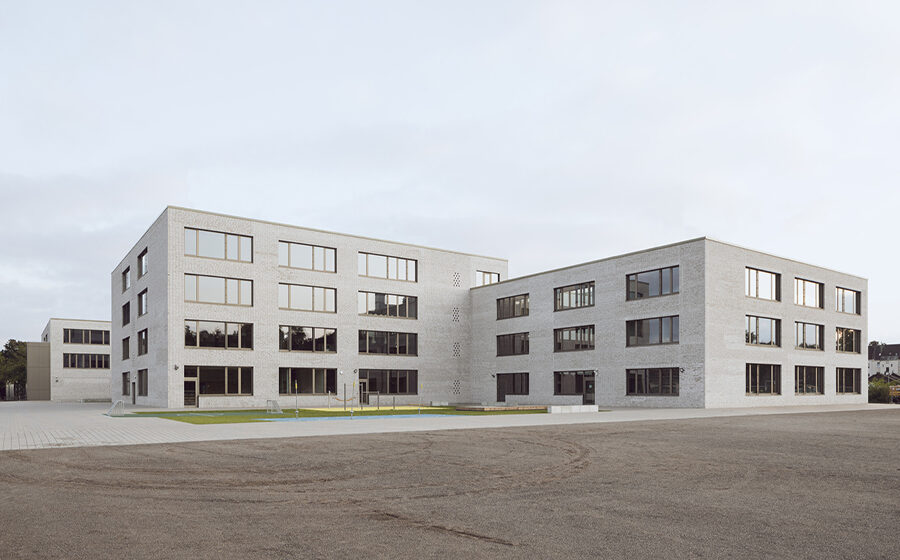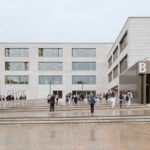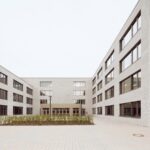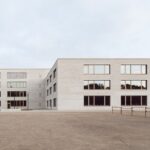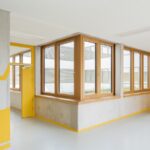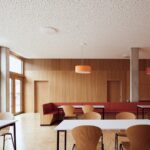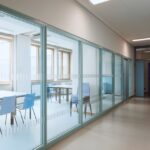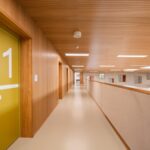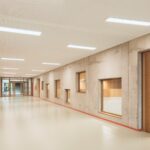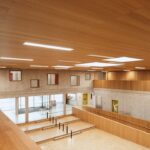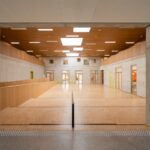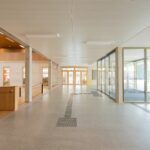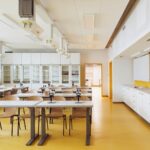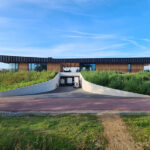The Gustav Heinemann Comprehensive School in Essen features a carefully considered architectural design that integrates well with its surroundings. The building volume is divided into distinct sections, allowing for clearly defined outdoor spaces on the school campus. By offsetting the individual building sections, the school blends seamlessly into the urban context while creating a prominent entrance zone.
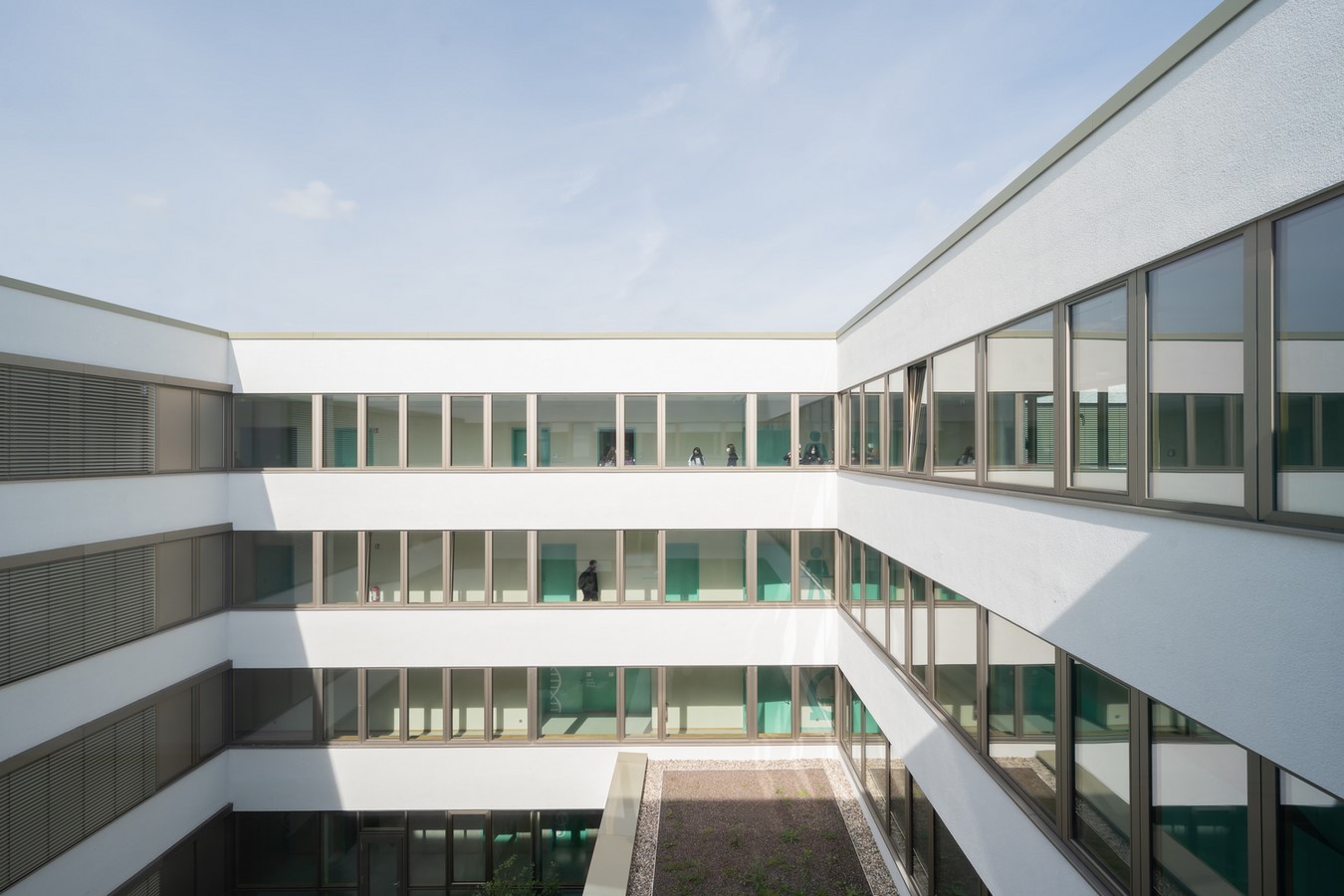
Interior Layout and Functionality
Continuing the clarity of its exterior structure, the interior of the school is thoughtfully organized to reflect its functional requirements. Theme-based rooms are grouped into building units, interconnected via a central circulation axis. The two-storey forum serves as a versatile and communicative space, functioning as the heart of the school. Surrounding the forum are communal areas such as the school hall and library, enhancing the southern part of the building dedicated to shared activities.
Clusters and Learning Spaces
The architectural dominance of the clusters, known as “year group or learning houses,” is evident along the school boulevard. These clusters house classrooms and informal learning areas, grouped around courtyards to ensure ample daylight and clear orientation. Group rooms at the center of each cluster facilitate various forms of learning, promoting collaborative activities and individual study.

Exterior Design and Sustainability
Externally, the school boasts a robust masonry facade made of light-colored, whitewashed facing bricks, providing a uniform and calming appearance. Large window elements in wood-aluminium construction adorn the upper-floor facades, enhancing natural light and ventilation. Internally, wood-based materials contribute to a warm and inviting atmosphere.
Sustainability and Certification
Built to passive house standards, the school surpasses the requirements of the 2016 German Energy Saving Ordinance by 20%. The certification process according to the Assessment System for Sustainable Building (BNB) aims to achieve a BNB Silver certification, considering factors such as energy efficiency, ecology, economic viability, and architectural quality. The result is an energy-efficient, sustainable building designed with careful consideration for all phases of development.

